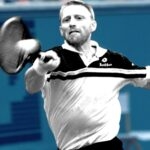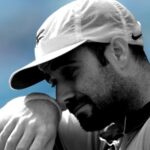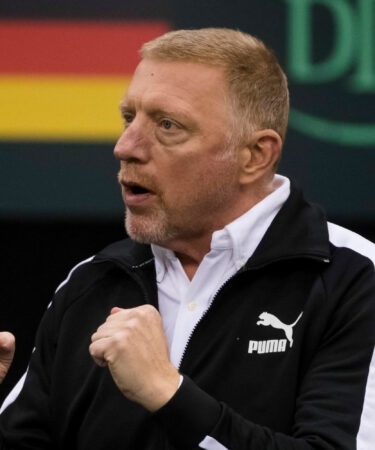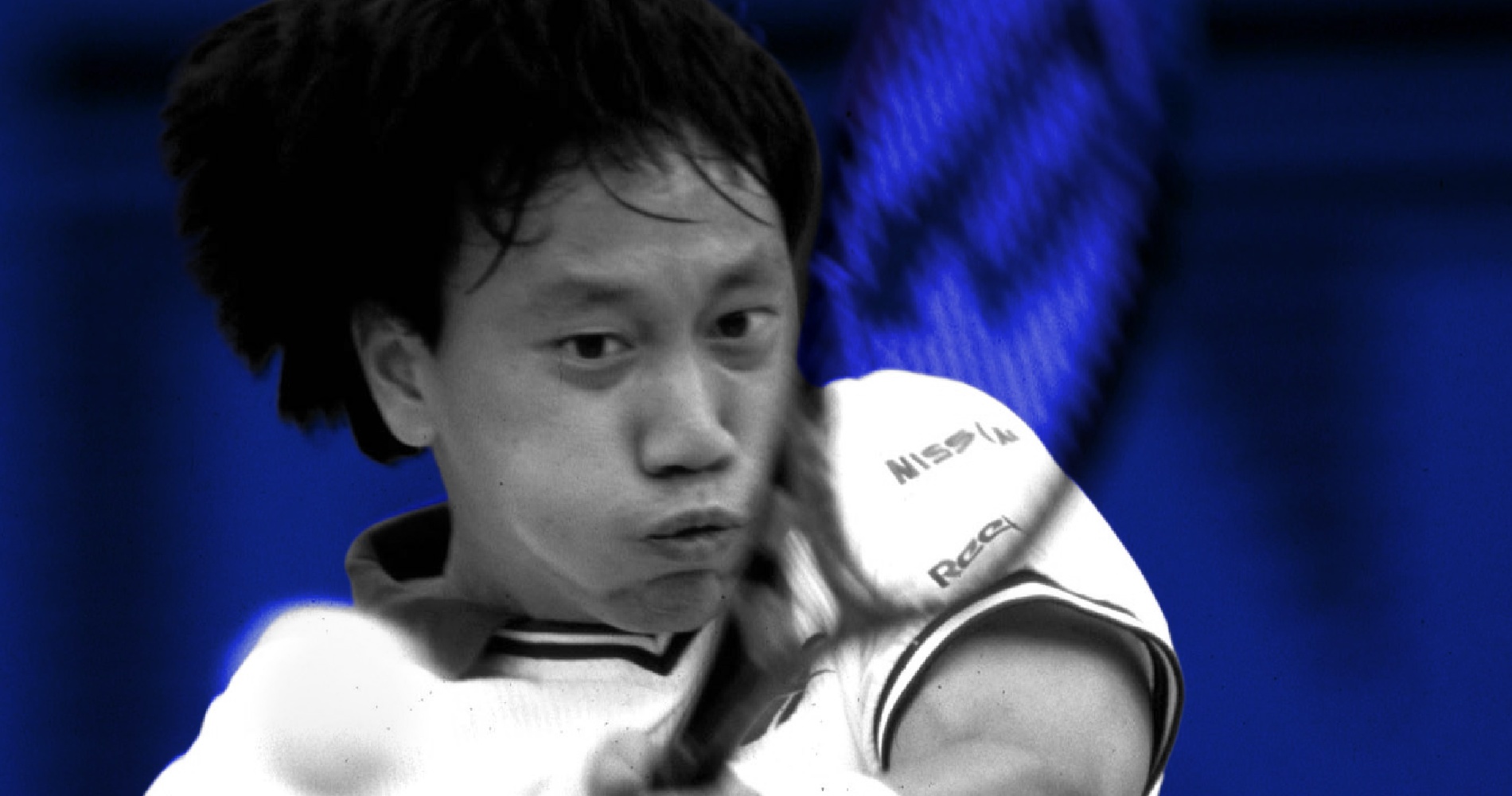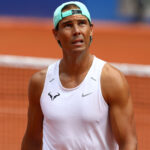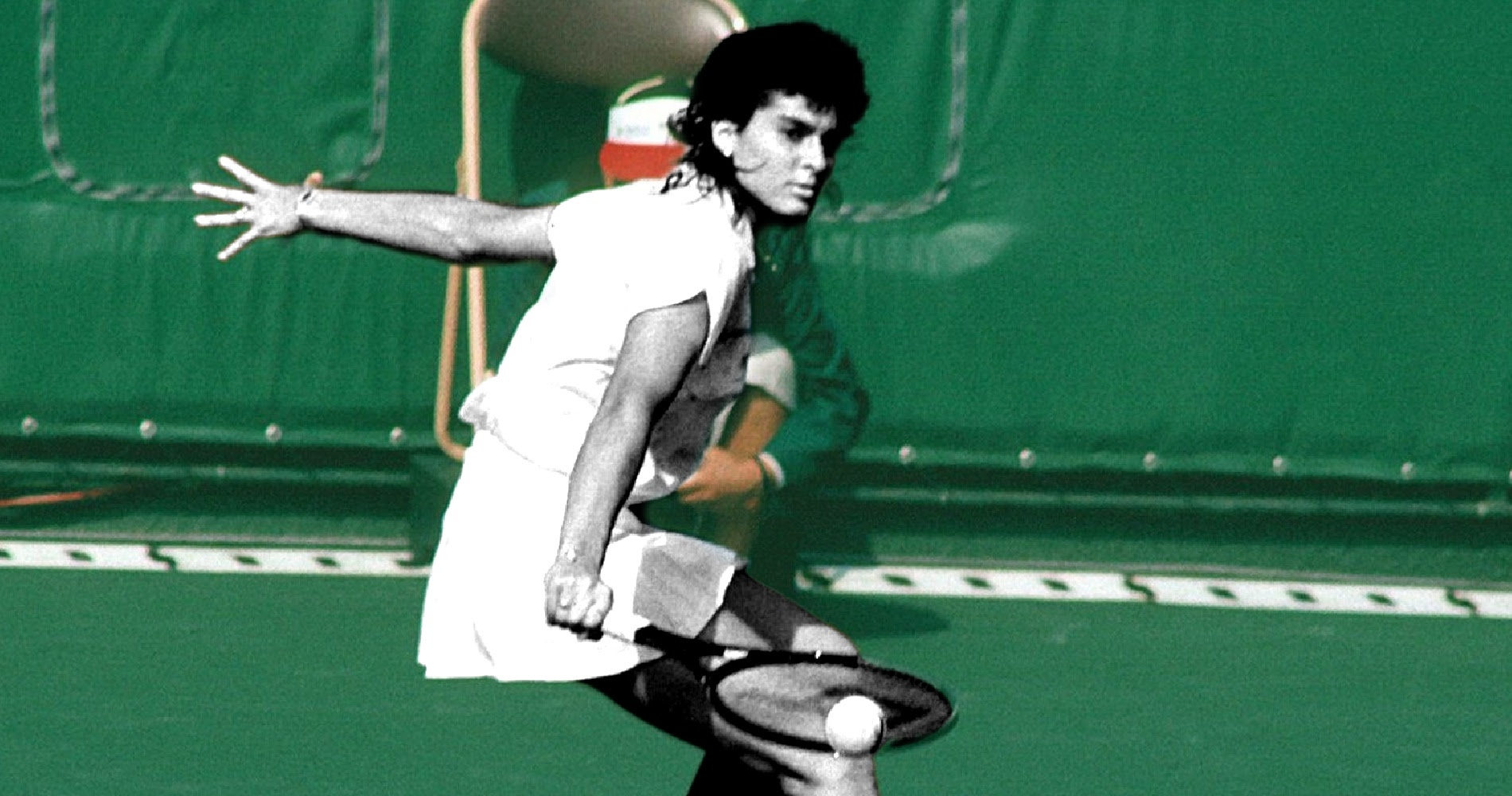January 28, 1996: The day Boris Becker won his final Grand Slam title
Every day, Tennis Majors looks back at some of the biggest moments in tennis history. On January 28, 1996, Boris Becker beat Michael Chang to win the Australian Open, the last Grand Slam title of his career.
 Boris Becker
Boris Becker
What happened exactly on that day?
On this day, January 28, 1996, Boris Becker claimed his second Australian Open title, defeating Michael Chang in the final (6-2, 6-4, 2-6, 6-4). The German hadn’t won a Grand Slam tournament since his first triumph in Melbourne five years before, in 1991, just before he became world No 1 for the first time. This sixth major title would be his last. As for Chang, it was the second of the three major finals he would lose in less than two years, after the 1995 French Open and before the 1996 US Open.
The players: Boris Becker and Michael Chang
- Boris Becker – “Boom Boom” six-time major champion, youngest man to win Wimbledon
Boris Becker was born in 1967. In 1985, the German became the youngest ever Wimbledon champion at the age of 17, beating Kevin Curren in the final (6-3, 6-7, 7-6, 6-4). In total, he would claim three titles at the All England Club, which was also the scene of his famous rivalry with Stefan Edberg. His powerful serve, which he often followed to the net, earned him the nickname “Boom Boom”. He was famous for his spectacular diving volleys, as well as for his dramatic play and emotional outbursts.
His peak years were undoubtedly 1989-1991. In that period, he claimed three Grand Slam titles (Wimbledon and the US Open in 1989, the Australian Open in 1991), and he eventually reached world No 1 on January 28, 1991 after he had beaten Ivan Lendl (1-6, 6-4, 6-4, 6-4) to win his first Australian Open crown.
Becker then struggled in the next seasons, and in 1993, he even left the top 10 for the first time in eight years. In 1994, he reached the semi-finals at Wimbledon and claimed the Stockholm title, beating on his way the three best players in the world to finish the year as world No 3.
In 1995, he finished runner-up to Pete Sampras at the All England Club (6-7, 6-2, 6-4, 6-2) and reached the semi-finals at Flushing Meadows, defeated by Andre Agassi (7-6, 7-6, 4-6, 6-4). At the start of 1996, he was world No 4.

- Michael Chang – the youngest men’s singles champion at Roland-Garros
Michael Chang was born in 1972. In 1987, at the age of 15, he became the youngest player to ever win a match at the US Open (defeating Paul McNamee). The following year, in June, aged only 16 years and three months, he was the youngest player to enter the top 100, and he reached the fourth round of a Grand Slam tournament for the first time, in New York, where he was beaten by Andre Agassi.
In 1989, aged 17 years and 3 months, Chang became the youngest player to ever win a Grand Slam tournament, defeating Stefan Edberg in the Roland-Garros final after being down two sets to one (6-1, 3-6, 4-6, 6-4, 6-2).
On his way to the final, he defeated world No 1 Lendl, to general astonishment, in the fourth round. In this match, Chang showed a lot of nerve for a teenager, engaging into a mind game against Lendl, especially when he performed his famous underarm serve, which became almost as famous as Maradona’s “Hand of God” in football. In 1990, Michael Chang struggled to confirm his new status.
Although he still reached the quarter-finals at Roland-Garros (defeated by Andre Agassi, 6-2, 6-1, 4-6, 6-2), he was kicked out of the top 10 in April 1990 until March 1992. He obtained his next remarkable Grand Slam results in 1995, reaching the semi-finals in Melbourne (lost to Sampras, 6-7, 6-3, 6-4, 6-4) and finishing runner-up to Thomas Muster at Roland-Garros (7-5, 6-2, 6-4). At the start of the 1996 Australian Open, he was world No 5.
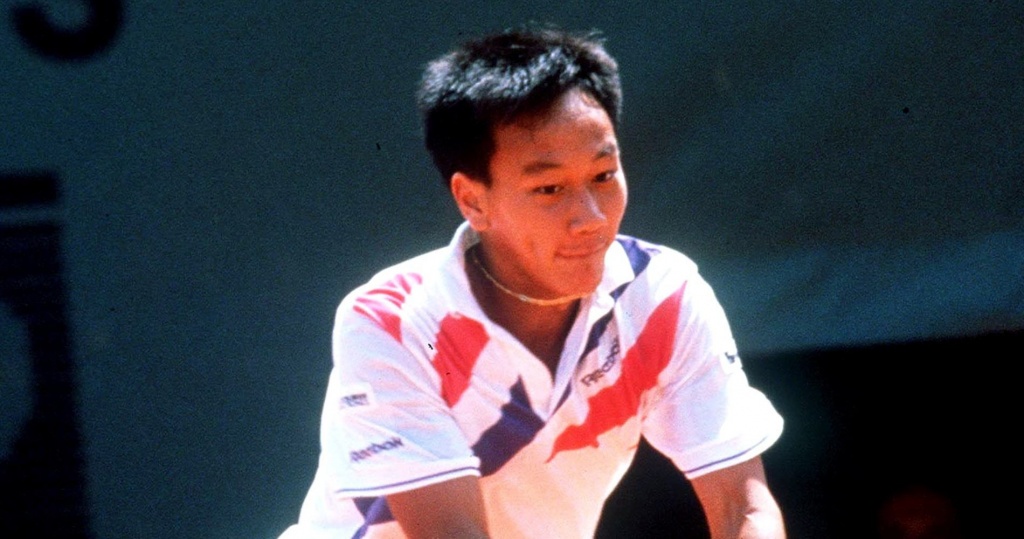
The place: Australian Open, Melbourne Park
Unlike the other Grand Slam tournaments, the Australian Open (first known as the Australasian Championships and, later, the Australian Championships) had changed location several times over the years. In fact, the event switched cities every year before it settled in Melbourne in 1972, and no fewer than five Australian cities had hosted the event at least three times: Melbourne, Sydney, Adelaide, Brisbane and Perth. The event was originally held on grass at the Kooyong Stadium, in a wealthy eastern suburb of Melbourne.
Its timing had changed several times as well, between early December and January, going from being the first Grand Slam of the year to being the last. Until 1982, many of the best players skipped the Australian Open, mainly because of the remoteness, and the low prize money, but then, with the triumph of Mats Wilander, the dynamic changed.
The tournament’s board made big efforts to become as prestigious as the other Grand Slams, which ended up with the event moving to a new location in 1988, to Flinders Park (later known as Melbourne Park), switching from grass to hard courts, and displaying the first-ever centre court equipped with a retractable roof. Prizes increased as well, and it wasn’t long before the tournament became many players’ favourite Grand Slam. In fact, since the tournament had moved, all the men’s champions had reached world No 1 in their career.
The facts: Becker wins in four sets
The 1996 Australian Open final pitted two players who had both struggled in the early 1990s after having been successful in the late 1980s. But they occupied different sections of the tennis pantheon; while Chang only held one major title, Boris Becker held five. They also had been back in the game in 1995, as they had both reached a Grand Slam final, and they were now world No 4 and No 5. Despite these similarities in their careers, they couldn’t have been more different. While the tall German relied on his amazing power and his big serve to play a very aggressive game, the short American mostly relied on his footwork and great defensive skills.
Although it was logical to see Becker, a former champion and still world No 4, in the Australian Open final, it was more unexpected than one might think. The German had started the year in Doha, losing in the second round to world No 122 Nicolas Pereira (7-6, 6-7, 7-6), and he had to fight through five sets to defeat Greg Rusedski (6-4, 3-6, 4-6, 6-3, 6-3) and Thomas Johansson (4-6, 3-6, 6-2, 6-1, 6-4) in his two first rounds in Melbourne. The world No 1, Sampras, lost in the third round against Mark Philippoussis, and the world No 2, Andre Agassi, was ousted in the semi-finals by Chang (6-1, 6-4, 7-6).
From the very start of the match, the German set high standards, quickly taking the first four games, sealing the first set, 6-2. In the second set, Chang battled to keep up until he was finally broken at 4-4. Becker won his service game at love to take a two-set lead. At this time, he seemed untouchable, dominating his opponent not only with his serve-and-volley game, but also in baseline rallies.
However, no matter how under-the-gun Chang seemed to be, he was the type of player never to give up. The 1989 Roland-Garros champion managed to take the third set, 6-2, but he was overpowered in the fourth set. Becker finally prevailed, 6-2, 6-4, 2-6, 6-4. It was the German’s sixth Grand Slam title, and his first since his triumph at Melbourne Park in 1991, although he had finished runner-up in two major events in the meantime.
“To tell the truth, I didn’t think I had a Grand Slam left in me,” Becker told the crowd, according to The Washington Post.
The former world No 1 would later explain that he had found motivation in his family life. “That has allowed me to continue,” Becker said, according to Sports Illustrated. “Otherwise, he added, “I would not be playing anymore. Tennis is important, but after you’ve been so good for so long, there’s got to be something else. Your feelings you don’t find on a tennis court.”
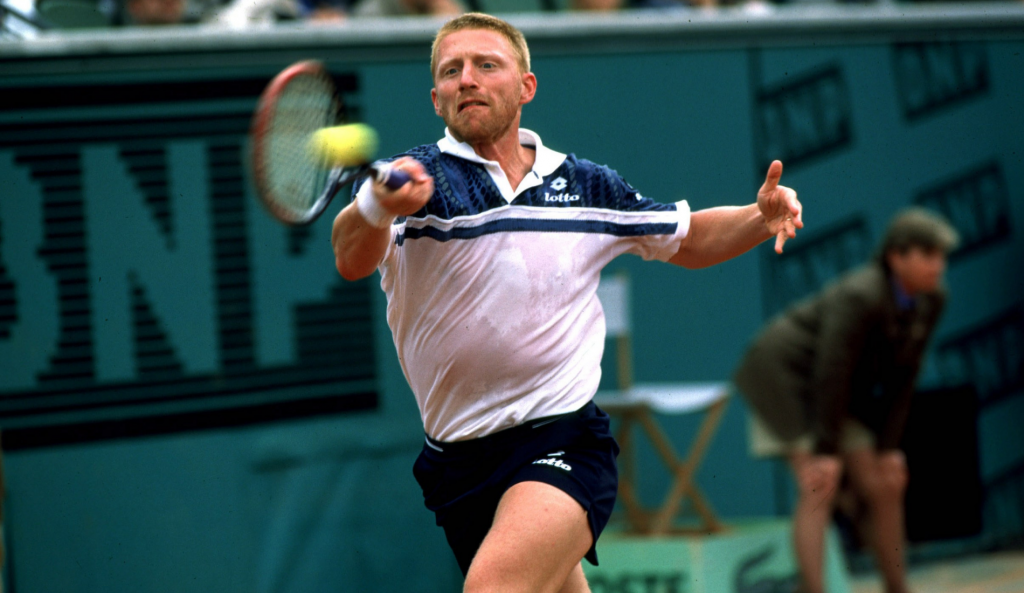
What next: Becker hits heights; Chang makes US Open final
Boris Becker would be one of the dominant players of the 1996 season. After a fourth triumph at the Queen’s Club in June (defeating Stefan Edberg, 6-4, 7-6), a wrist injury would keep him away from the tour until the indoor season, during which he would play at a high level. He defeated Sampras in the Stuttgart final (3-6, 6-3, 3-6, 6-3, 6-4) and he would beat the world No 1 again in the Masters Cup round-robin (7-6,7-6), but the American would edge him in the final in one of the greatest matches in tennis history (3-6, 7-6, 7-6, 6-7, 6-4).
After his loss against Carlos Moya in the 1997 Australian Open first round, and his loss to Sampras in the Wimbledon quarter-finals (6-1, 6-7, 6-1, 6-4), Boris Becker would announce his retirement from Grand Slam events. In 1998, he would attend only 11 tournaments, without claiming a single title, and in 1999, he would attend his last tournament at Wimbledon, defeated by Patrick Rafter in the fourth round (6-3, 6-2, 6-3).
Michael Chang would reach a second Grand Slam final in 1996, at the US Open (defeated by Pete Sampras, 6-1, 6-4, 7-6). In September, he would reach world No 2, his best ranking ever. Leaving the top 10 in early 1998, he would then slowly decline. In 2000, by claiming his 34th and last title in Los Angeles (defeating Jan-Michael Gambill in the final, 6-7, 6-3, ret), he would become one of the few players to have won tournaments over three different decades (the 1980s, the 1990s and the 2000s). It would be his last year as a top 50 player, and, after leaving the top 100 in 2002, he would retire in 2003.
